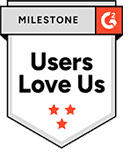Leasing an asset with the intention to eventually purchase it is a common practice among businesses. Whether it’s an optional purchase at the end of the lease or a bargain purchase price, companies often utilize lease purchasing options to acquire fixed assets. However, understanding the accounting treatment for these lease-to-own scenarios is crucial. In this blog post, we will explore the concept of lease-to-own accounting, highlighting the considerations and implications of fixed asset lease accounting.
What are the key considerations for lease purchasing options and fixed assets?
1. Economic Incentives and Intent
When a lessee intends to exercise an optional purchase or there is a bargain purchase price, it creates an economic incentive for acquiring ownership. Referred to as lease-to-own accounting, this approach assumes eventual ownership at the end of the lease term.
2. Finance Lease Treatment
In cases where the lessee intends to exercise an option or there is a bargain purchase price, the lease must be treated as a finance lease. This classification affects the accounting treatment and financial reporting.
3. Amortization and Useful Life
Instead of amortizing the right-of-use assets solely over the lease term, lease-to-own accounting involves amortizing the asset’s value over its useful life. The expectation of ownership at the end of the lease justifies a longer amortization period.
4. Operating Lease Possibility
If there is an option to purchase, but it is deemed unlikely to be exercised, the lease may still qualify as an operating lease based on specific circumstances. This determination depends on various factors and should be carefully assessed.
5. Remeasurement and Finance Lease Conversion
Once the lessee decides to exercise or intends to exercise the purchase option, the lease requires remeasurement. This results in the lease being reclassified as a finance lease, with a longer amortization period.
6. Fixed Asset Accounting
After the lease is purchased, the right-of-use asset and any accumulated amortization are reversed from the books. The asset is then transferred to the fixed asset register and accounted for in accordance with established fixed asset accounting practices.
Make Informed Decisions with Lease-to-Own Accounting
Understanding lease purchasing options and the associated lease-to-own accounting is vital for businesses considering acquiring fixed assets through leasing arrangements. By correctly accounting for these transactions, companies can ensure accurate financial reporting and align their accounting practices with regulatory requirements.























